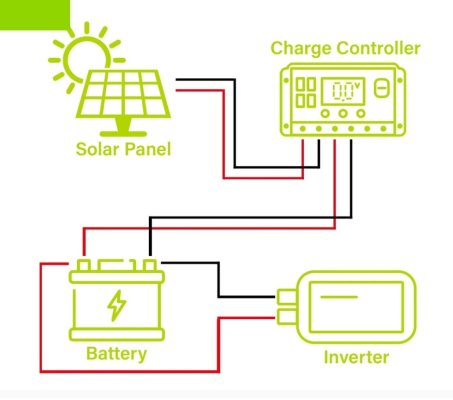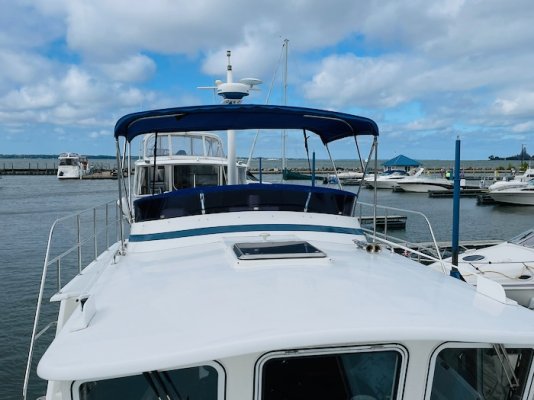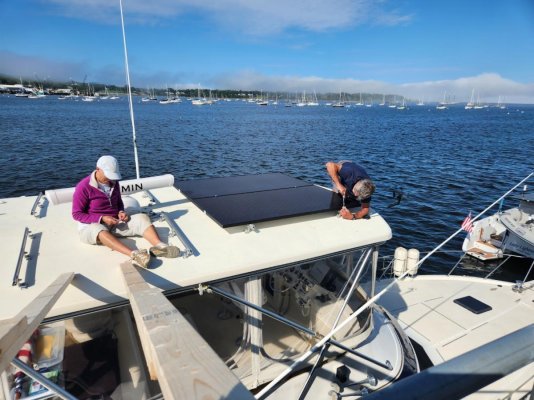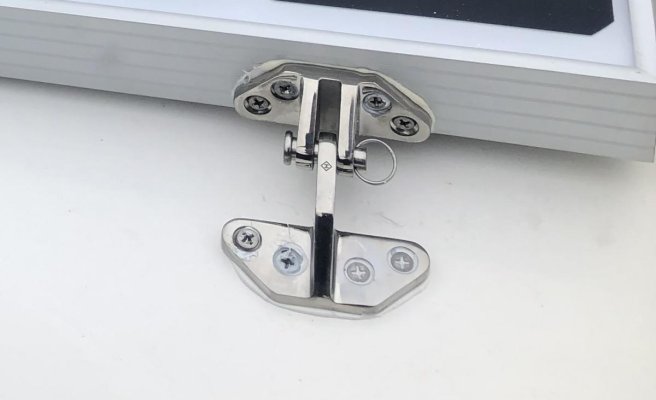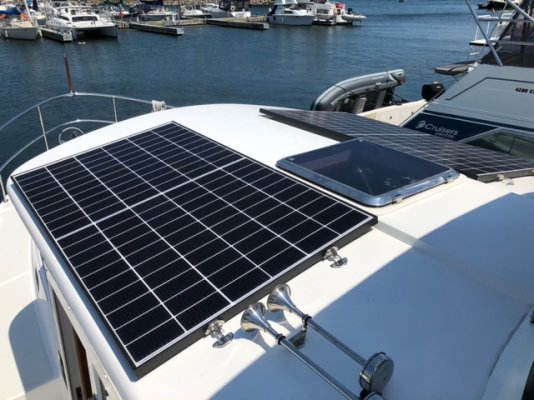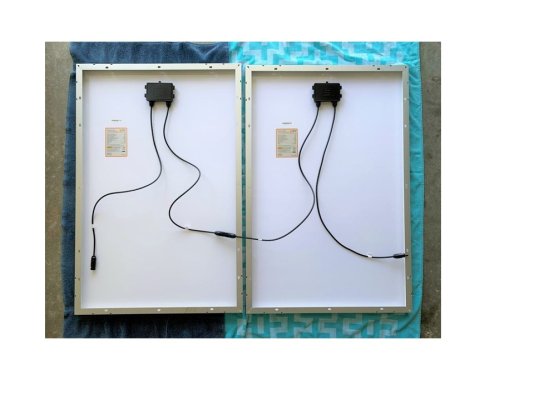Well, from an electrical hookup perspective, it's close to just wire it into your batteries. Biggest difference is there needs to be some sort of controller between the panels and the batteries to modulate the flow. These days, often called an "MPPT" type controller. Victron is the most common on this forum, but there are others. Very basic schematic attached.
By far, the most difficult part of the install is not the wiring, but the physical mounting of the panels. You will need to find panels that fit into your roof (hard top? A picture would help) including some mechanism to fasten them down.
I installed a pair of Newpowa panels on my camper van that seems to work fine. They now have 220w panels (24v) that look like a good starting point depending on your mounting constraints
(HERE). Panels with more capacity would be better of course, but these would definitely help. At 24v, they would allow you to use smaller diameter cables, especially if you ran them in series.
I assume you would mount two panels - if they are both on the same plane (meaning one isn't skewed in a different direction than the other which happens sometimes on arched cabin tops), and I'd there are no shading issues, you can use a single controller. A suggestion is something like this Victron 100/30
(HERE) would work and give you some headroom for future larger panels.
Suggest next step would be to do a bit of Google searching for panels for physical size, and giving some thought on how to secure them to your roof. Don't worry too much about the voltage - they don't necessarily need to be categorized as yacht or RV (usually 12 volt). Once you have an idea of how you'll mount and the size, folks here can assist with putting the assembly together. Wire size, making sure the MPPT is properly sized, etc. it is pretty straightforward but there are a couple things to be aware of.
Good luck.
Peter

